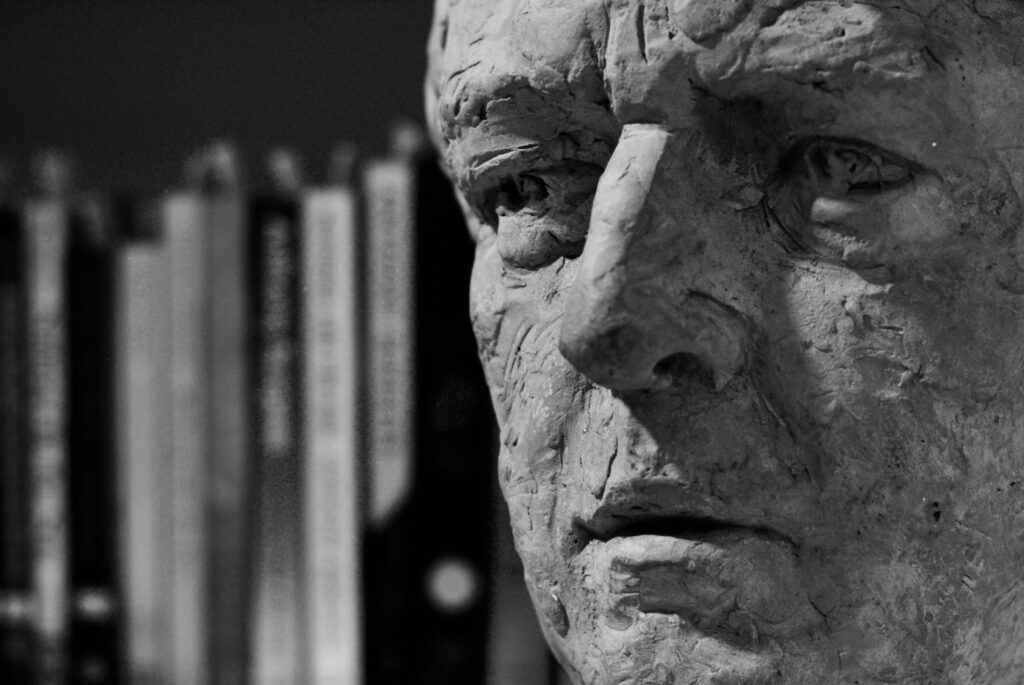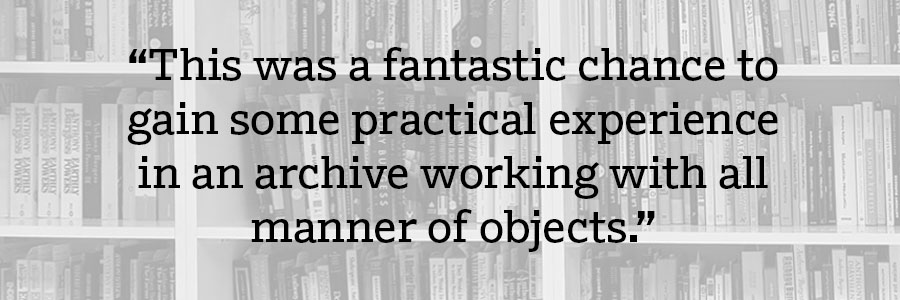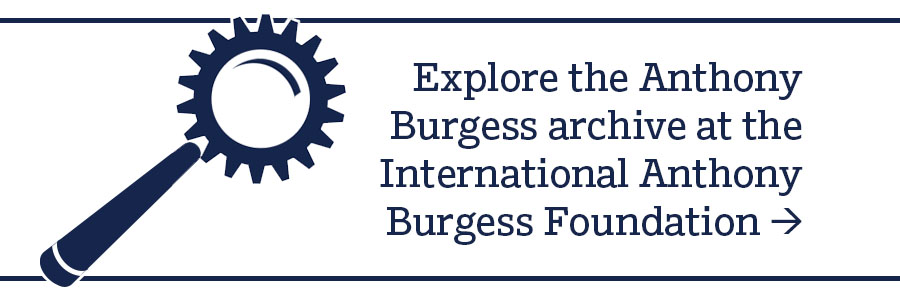Categorising a Life: Volunteering at the Burgess Foundation
-
Lydia Flack
- 8th July 2025
-
category
- Blog Posts
-
tagged as
- Archive
- Collections
- Inside The Archive
- Volunteers

In October 2024 I volunteered at the Burgess Foundation, where I assisted with a project to catalogue objects in the archive in preparation for digitisation. My academic background in History of Art has given me an interest in the politics of the museum, the ways in which visitors interact with a space, and how this is guided by curatorial decisions and bias.
One of the most pertinent issues faced today is the concept of access to the museum, and there has been much discussion in the heritage sector about both physical and invisible barriers (education, social and cultural capital, reading levels all play an important role). In particular, the digital archive not only provides the traditional source for researchers but it can also act as a bridge between the physical museum and the online space for a general audience. This was a fantastic chance to gain some practical experience in an archive working with all manner of objects as the collection is incredibly wide-ranging, having been sourced from Anthony Burgess’s own homes after his death in 1993.
I found the Burgess Foundation different from other heritage institutions: most national museums are based on a nucleus of one wealthy man’s collection of historical and personal artefacts, so it feels rarer to have such objects be so contemporary. The Burgess Foundation archive, for example, contains typewriters, audio cassettes and battery-powered clocks. You will not find such items in Sir John Soane’s Museum in London, whose collection spans millennia but stops in the 1830s. I found that my familiarity with Burgess’s personal objects created a different relationship with the archive, which in turn affected how I felt during the categorisation process. It seems that the principal question being considered at the Burgess Foundation is how to categorise a life.

My experience began with a meeting with Anna, the archivist, during which we talked about methods of object categorisation and the importance of accessibility in the archive — themes that would also be relevant later. Anna gave me a selection of objects, which I catalogued by describing each piece, researching its provenance and noting its condition for future reference.
Some objects provided opportunities to get lost in a world of literary accomplishment, including unfamiliar international literary prizes, researching how jurors are selected for the Monte Carlo Television Festival, and tracking the history of particular electric typewriters. Another example of unexpected research was when I had to make a diversion into historic Italian family crests, to find out about the background of Burgess’s second wife, Liana Macellari, the daughter of an Italian contessa.
I found that the crux of the cataloguing project lay at the intersection between the home and the museum. It can be difficult to make sense of the difference between an archive formed by a professional collector and an archive formed from the haphazard accumulation of a lifetime. Some collections, such as this one, depend on how a person populated their home, relying more on utility and sentimentality than posterity or coherence. This is particularly interesting as Burgess was invested in how he presented himself to the world, sometimes comparing himself to Shakespeare. However, in the archive, medals for literary achievement sit alongside a cheap Ikea clock which has been hand-painted to suit a new colour scheme. I found this to be humanising in a space that often feels removed from everyday reality.
One question that Anna and I discussed was the transience of categorisation, and how one person’s definition can dictate how an object will be understood. This can be significant when applied to the objects of a home, when objects were utilised in ways that defied their original purpose. One week I was tasked with categorising six typewriters in varying states of disrepair. This made me wonder why Burgess had so many, and whether some of them were ever used. If this was the case would they have counted as home décor? Objects being used for something other than their intended purpose could be revealed by examining their condition. Another example was provided by the numerous mugs in the collection, some of which appear to have been used as ashtrays by Burgess, a prodigious smoker.
The objects in the Foundation’s archive take you around the world, always leading back to home. A personal, domestic collection — without the curation of sense of self that is applied to collections meant for the world to see — can reveal more about a literary figure than his published writing. We can learn about the ways in which he worked, and the life he led.



